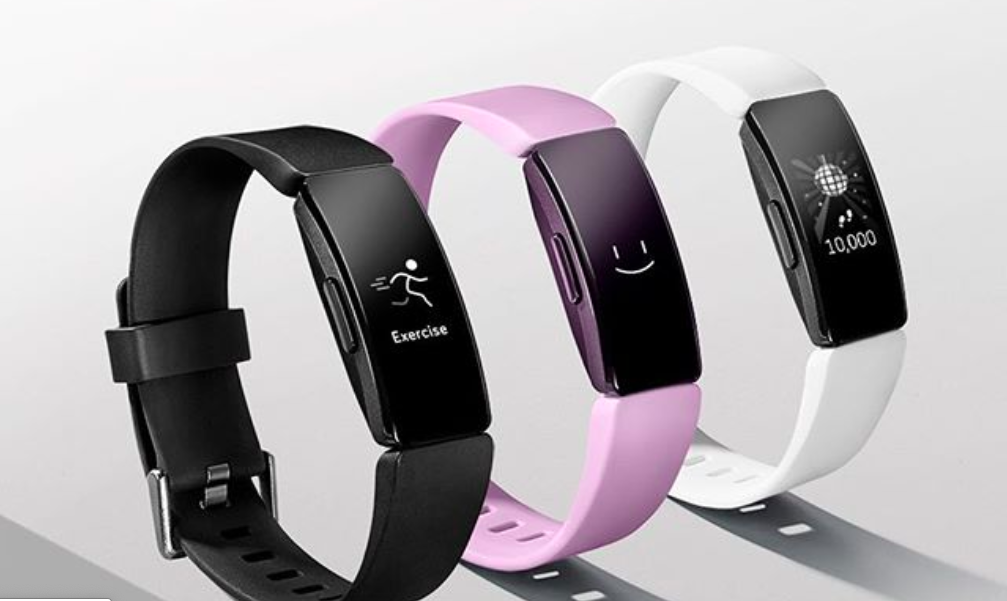By Thomas J. Ryan
Shares of Fitbit fell 21 percent on Thursday after the company slashed guidance for the full year and indicating it was changing its approach to pricing and promotions as sales of the Versa Lite smartwatch fell short of targets. Fitness tracker sales rebounded in the second quarter, but the company’s streak of quarterly revenue growth will end in the third quarter.
In the quarter ended June 29:
- Sales rose 4.8 percent to $313.6 million, in line with guidance. Fitbit had expected sales to expand 2 percent to 7 percent to land in the range of $305 million to $320 million.
- On a non-GAAP basis, gross margins were reduced to 35.6 percent from 40.9 percent, just below guidance calling for margins between 36 percent and 38 percent. Margins were negatively impacted by lower warranty benefit compared to the prior year and the reduction in average selling price, partially offset by an improvement in yield loss and efficiencies.
- Non-GAAP operating expenses declined 18 percent year-over-year to $160 million, representing 51 percent of revenue.
- On a non-GAAP basis, the net loss was cut to $35.8 million, or 14 cents, from $54.2 million, or 22 cents, a year ago. The results were ahead of guidance calling for a non-GAAP loss per share in the range of 20 cents to 17 cents.
- Adjusted EBITDA came to a loss of $30.8 million against a loss of $55.8 million a year ago. Adjusted EBITDA had been expected to be in the range of a loss of $59 million to $47 million.
On a GAAP basis, gross margins were reduced to 34.5 percent from 39.8 percent. GAAP operating expenses declined 18 percent year-over-year to $179 million. The net loss was slashed to $68.5 million, or 27 cents a share, from $118.3 million, or 49 cents.
 By product category, tracker revenue increased 51 percent year-over-year and represented 59 percent of revenue. Smartwatch revenue decreased 27 percent year-over-year, partly due to weaker than expected sales of Fitbit Versa Lite Edition, and represented 38 percent of revenue. Accessory and non-device revenue represented 3 percent of revenue.
By product category, tracker revenue increased 51 percent year-over-year and represented 59 percent of revenue. Smartwatch revenue decreased 27 percent year-over-year, partly due to weaker than expected sales of Fitbit Versa Lite Edition, and represented 38 percent of revenue. Accessory and non-device revenue represented 3 percent of revenue.
Devices sold increased 31 percent year-over-year to 3.5 million. Tracker devices sold increased by 56 percent year-over-year. Smartwatch devices sold decreased by 7 percent year-over-year.
Average selling price decreased 19 percent year-over-year to $86 per device due to the introduction of more affordable devices that are designed to lower the barriers to joining Fitbit’s community of active users.
On a conference call with analysts, CEO James Park attributed the weakness at Versa Lite to the company’s pricing go-to-market strategy.
“We added Versa Lite to our product lineup in Q1, the intention of lowering the barrier to entry for consumers to purchase a quality smartwatch with certain core features and shifted to an everyday low-pricing strategy from a promotional,” said Park. “This resulted in lower promotional dollar spend and less sell-through. While Versa Lite received good press and consumer reviews, we saw that consumers were willing to pay more for a smartwatch with additional features or look for discounting versus everyday value.
He still believes the Fitbit brand “remains strong.” as Versa sales exceeded our expectations, benefiting from consumer trading up to pay more for more features. Tracker sales also accelerated in the quarter. Using the last 4 weeks of sales through July 20 in the U.S. as a proxy, Fitbit had four out of the five 5 hot spots in the wearables category, and the Versa smartwatch outsold each Samsung and Garmin.
Park said the company is reevaluating its pricing and promotion strategy for future hardware launches, and it’s accelerating hardware product development. Added Park, “This will not only enable us to adapt faster to changing market conditions, but it should also make our business more predictable on a year-over-year basis, with new product introductions comprise the majority of our sales. In order to execute the strategy as efficiently as possible and with lower capital expenditures and operating expense than we do today, we are accelerating our migration to a joint development model where our manufacturers will bear more of this cost burden.”
<span style="color: #999999;">Despite its least-expensive smartwatch coming up short, Fitbit remains focused on affordable price points, according to Park: “We’re confident there’s a real opportunity to deliver a device innovation through more affordable and accessible price point, and we continue to focus on bringing devices to market in the $50 to $300 price range that are easy to use and feature-rich.”
Regionally, U.S. revenues were down 1 percent year-over-year to $181 million, representing 58 percent of total revenue. International revenue rose 14 percent to $133 million and accounted for 42 percent of total revenue. EMEA revenue grew 33 percent to $88 million; Americas excluding U.S. revenue grew 21 percent to $19 million and APAC revenue declined 26 percent to $26 million.
Fitbit noted that new devices introduced in the past 12 months, Fitbit Charge 3, Fitbit Inspire, Fitbit Inspire HR, Fitbit Ace 2 and Fitbit Versa Lite Edition, represented 68 percent of revenue. Forty-one percent of activations came from repeat users. Of the repeat users, 53 percent came from users who were inactive for 90 days or more. Active users increased year-over-year.
Fitbit Health Solutions revenue grew 16 percent year-over-year, with strength overseas, and is on track to deliver its full-year revenue of approximately $100 million.

The revised outlook for 2019 includes:
- Full-year 2019 revenue to be $1.43 billion to $1.48 billion, down from $1.52 billion to $1.58 billion under its previous guidance due to weaker Versa Lite sales. At the midpoint, sales are now expected to be $1.455 billion, down from $1.550 billion previously.
- Non-GAAP gross margin is expected to be 35 percent, down from 40 percent previously expected, due to a decrease in revenue, higher returns and E&O costs, and higher promotions.
- The non-GAAP operating expense target has been reduced to approximately $640 million from the previously-forecasted range of $660 million to $690 million.
- The non-GAAP basic net loss per share is expected in the range of 38 cents to 31 cents. The projection wasn’t previously provided.
- Adjusted EBITDA is projected in the range of a loss between $85 million to $60 million. Previously, guidance called for adjusted EBITDA to be in the range of negative $30 million to breakeven.
- Free cash flow is expected to be negative in the range of $150 million to $120 million, versus negative $40 million to $70 million previously.
For the third quarter, Fitbit provided the following guidance:
- Revenue between $335 million and $355 million, down 10 percent to 15 percent year over year.
- An increase in devices sold and a decrease in average selling price.
- Non-GAAP gross margin will trend lower than the second quarter due to a mix shift toward smartwatches, higher hosting costs, and higher promotions.
- Non-GAAP operating expenses will be relatively flat year over year.
- An adjusted EBITDA loss between $19 million and $27 million.
- A non-GAAP EPS loss between $0.09 and $0.11.
The Q3 sales declines reflect a more aggressive pricing and promotional strategy. The guidance assumes a deceleration in the revenue growth rate of trackers and the rebound in smartwatch revenue growth. ASPs are expected to be down year-over-year but up sequentially from Q2. The revenue range also reflects the timing of our shipments into the holiday period.
Ron Kisling, CFO, concluded on the conference call, “Despite the disappointing Versa Lite revenue trajectory, we have made steady progress on the transformation of our business. Active users continue to grow on a year-over-year basis. Our Fitbit health services business is on track to deliver approximately $100 million of revenue, and we successfully introduced our premium service to two countries. We expect a typical fall product launch and are confident in our product pipeline. We have adjusted our Versa Lite expectations and promotion strategy and are encouraged by the strength of the remainder of our portfolio.”
On Thursday, shares of Fitbit fell 89 cents, or 21.2 percent, to $3.31.
Photo courtesy Fitbit
















